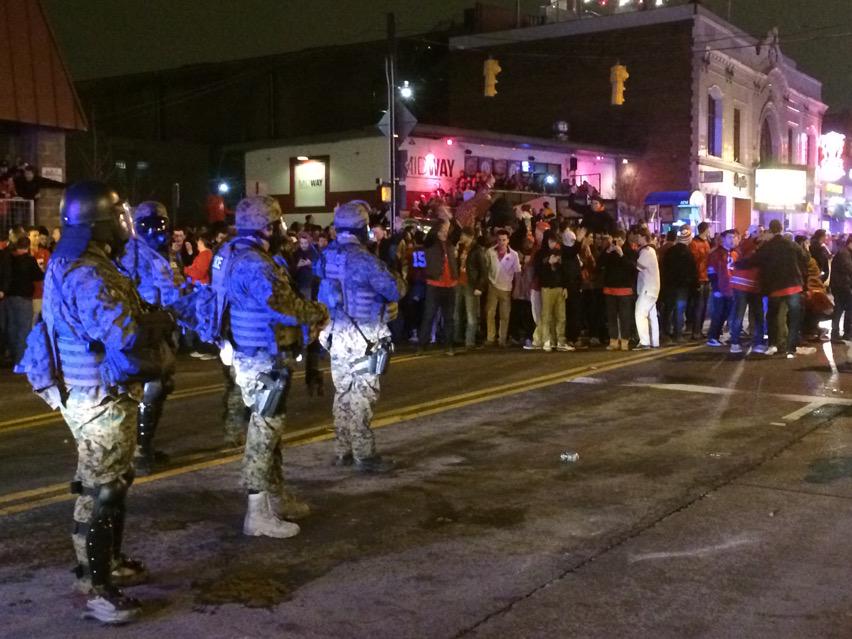The United States capped its best year for hiring in 15 years with a healthy gain in December, and the unemployment rate hit a six-year low. The numbers support expectations that the United States will strengthen further this year even as overseas economies stumble.
The government said Friday that employers added 252,000 jobs last month and 50,000 more in October and November combined than it had previously estimated. The unemployment rate dropped to 5.6 percent from 5.8 percent in November. The rate is now at its lowest point since 2008.
Still, wage growth remains weak. Average hourly pay slipped 5 cents in December. And the unemployment rate fell partly because many of the jobless gave up looking for work and so were no longer counted as unemployed.
Even so, nearly 3 million more people are earning paychecks than at the start of 2014 — the largest annual job gain since 1999. Gas prices have also plunged, which will give consumers — the main driver of the U.S. economy — a further boost in coming months.
"We are in a recovery that is accelerating," said Michael Strain, an economist at the American Enterprise Institute, a conservative think tank.
The unemployment rate is now near the 5.2 percent to 5.5 percent range that the Federal Reserve considers consistent with a healthy economy — one reason the Fed is expected to raise interest rates from record lows by midyear.
Yet for now, the plummeting oil prices and weak pay growth are helping keep inflation even lower than the Fed's 2 percent target rate. Many economists think inflation may fail to reach even 1 percent this year. A result is that the Fed could feel pressure to avoid raising rates anytime soon.
"There is still room for stimulus without having to worry about inflation taking off," Strain said.
Most economists forecast that the U.S. economy will expand more than 3 percent this year. If it does, 2015 would mark the first time in a decade that growth has reached that level for a full calendar year.
American businesses have been largely shrugging off signs of economic weakness overseas and continuing to hire at solid rates. The U.S. economy's steady improvement is especially striking compared with the weakness in much of the world.
Europe is barely growing, and its unemployment rate is nearly double the U.S. level. Japan, the world's third-largest economy, is in recession. Russia's economy is cratering as oil prices plummet. China is straining to manage a slowdown. Brazil and others in Latin America are struggling.
Fears about significantly cheaper oil spooked investors earlier this week before financial markets recovered. But most economists remain optimistic that lower energy prices will benefit U.S. consumers and many businesses.
The drop in average hourly pay last month to $24.57 followed a downward revision to November's average pay gain. Hourly pay over the past two months has now risen just a penny.
During 2014, average wages rose just 1.7 percent, not much above the inflation rate, which was 1.3 percent. As hiring ramps up and the unemployment rate falls, those pressures should, at least in theory, compel employers to raise pay to attract workers. But that trend has yet to emerge.
The fall in average pay may actually reflect economic strength, said John Silvia, chief economist at Wells Fargo. Silvia suggested that the healthy hiring of recent months means that "many of these new hires are entry-level workers and would be paid less" than experienced employees.
Last month, the number of unemployed fell 383,000 to 8.7 million. Fewer than one-third of people out of work found jobs. The rest stopped looking. The percentage of Americans who are either working or looking for work fell back to a 37-year low last touched in September.
The brightening jobs picture has healed some of the deep scars left by the Great Recession. The number of people who have been unemployed for more than six months fell 27 percent last year. And the number working part time who would prefer full-time work dropped 12 percent.
Still, to keep up with population growth since the recession began, the economy would need to create 4.9 million additional jobs, according to the Brookings Institution.
Economists expect more healing this year. Goldman Sachs estimates that additional spending on restaurants, auto dealers and other goods and services resulting from lower energy prices will lead to 300,000 more jobs this year than if oil prices had remained at their levels of six months ago.
Spending at retail stores and restaurants rose in November by the most in eight months, an early sign that Americans are spending some of the savings they are enjoying on gas-pump prices.



